Best Value Wines: A Comprehensive Guide
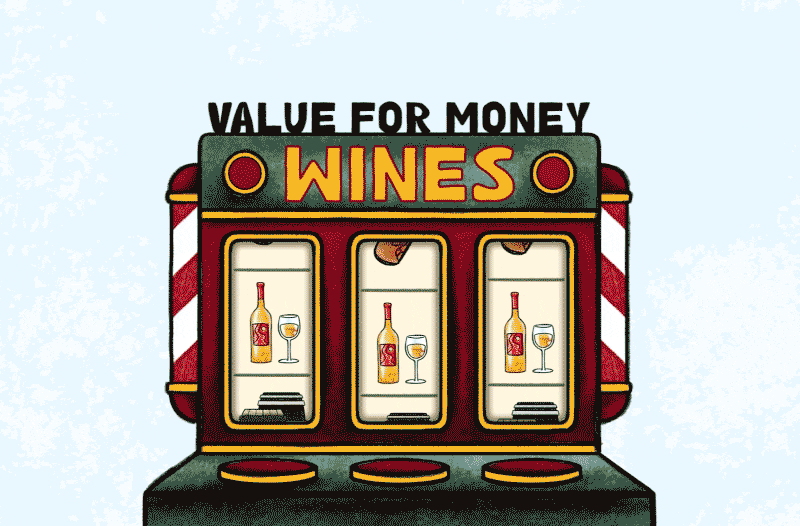 Wine has always occupied a unique space in the grand tapestry of beverages. It’s that delightful elixir that can elevate mundane moments into extraordinary experiences. But with great pleasure often comes a hefty price tag, leaving many of us pondering: can we savor the sublime without emptying our wallets? Amidst all of this, the term “best value wines” is often used. But what does this term mean in the context of wines? How can you differentiate the best-value wines from a sea of choices? In short, best-value wines offer an excellent alternative for wine enthusiasts who seek quality without draining their wallets. But first, let’s uncover the nuances of best-value wines, spotlight some great-value wine regions, and unravel the secrets behind producing these exceptional yet affordable wines.
Wine has always occupied a unique space in the grand tapestry of beverages. It’s that delightful elixir that can elevate mundane moments into extraordinary experiences. But with great pleasure often comes a hefty price tag, leaving many of us pondering: can we savor the sublime without emptying our wallets? Amidst all of this, the term “best value wines” is often used. But what does this term mean in the context of wines? How can you differentiate the best-value wines from a sea of choices? In short, best-value wines offer an excellent alternative for wine enthusiasts who seek quality without draining their wallets. But first, let’s uncover the nuances of best-value wines, spotlight some great-value wine regions, and unravel the secrets behind producing these exceptional yet affordable wines.
What are the best value wines?
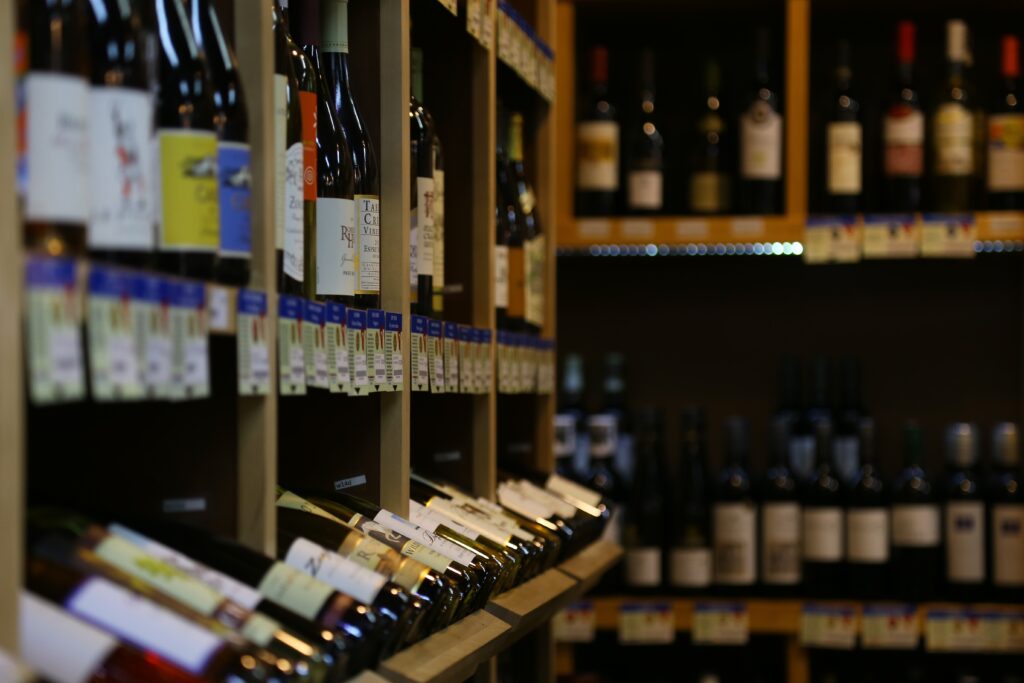
Best value wines refer to wines that offer an exceptional quality-to-price ratio. Best-value wines aren’t just about affordability; they are a testament to the art of winemaking, offering outstanding quality at a reasonable price point making them accessible to a wide range of wine enthusiasts.
These wines embody a harmonious balance where the sensory pleasures derived from the wine – its flavors, aromas, textures, and overall experience – are significantly superior to what one might expect given its price tag.
Best-value wines are not synonymous with cheap wines. Instead, they signify a remarkable equilibrium between taste, quality, and price, proving that outstanding quality can be found in a wide range of price brackets.
Contrary to popular belief, the world of fine wines extends beyond high-end labels, presenting numerous hidden gems waiting to be discovered.
What defines best-value wines?
Value is determined by the quality of the wine in relation to its price. A $20 or €10 bottle might offer exceptional value if it delivers a sensory experience comparable to pricier counterparts.
When it comes to wine, the options are seemingly endless, but contrary to popular belief, the best-value wines aren’t necessarily the cheapest ones on the shelf.
The criteria for defining best-value wines are:
- Quality of grapes: One of the fundamental aspects of a great wine is the quality of grapes used. Best-value wines often come from wineries specializing in grape varieties well-suited to their climate and soil.
- Winemaking expertise: The craftsmanship of winemakers significantly influences the final product. A skilled winemaker can transform ordinary grapes into an extraordinary wine, enhancing its value.
- Terroir: The region where grapes are grown, its soil, climate, and topography (collectively known as terroir) play a pivotal role in defining a wine’s character. Certain regions are renowned for producing outstanding wines, making them valuable in the world of wine lovers.
- Aging process: Wines that undergo a careful aging process tend to develop complex flavors and aromas. The duration and method of aging, whether in oak barrels, amphoras, egg concrete tanks or stainless steel tanks, contribute to the wine’s value.
- Reputation and awards: Wines that have received accolades from reputable wine competitions and critics often indicate exceptional quality, making them a valuable choice for consumers.
- Quality to price: Amidst the snobbery and elitism that sometimes shrouds the wine industry, there’s a bold truth waiting to be embraced: outstanding wines need not be expensive. While price often correlates with quality, it’s not the sole indicator of a wine’s value. Best-value wines offer a sensory journey that transcends their cost. There exists a world beyond the realm of astronomical price tags, where quality and affordability coalesce harmoniously.
How to find the best value wines?
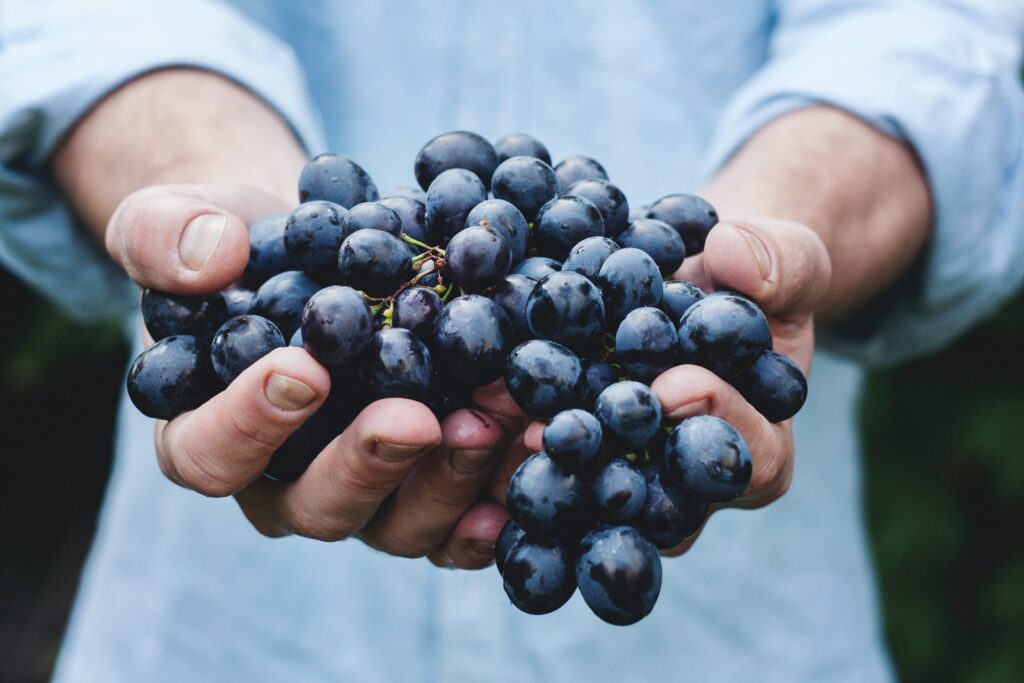
Exploring different wine regions, trying lesser-known grape varieties, and discovering up-and-coming wineries is a great way to find value-for-money wines. It’s also helpful to seek opinions, expert advice or reviews, and recommendations from specialized wine stores.
In this category, wines often showcase the unique identity of the wine-growing region through the use of indigenous grapes and distinct winemaking techniques.
The value-for-money wines often come from different regions around the world and encompass a broad spectrum of styles. They also frequently receive recognition and praise from wine experts and tasters, which enhances their reputation.
Here are some important factors that can help you identify how to find excellent value in wine:
- Explore lesser-known regions: While Bordeaux and Napa Valley wines might be iconic, lesser-known regions often produce hidden gems.
- Embrace local wineries: Local wineries, especially those off the beaten path, can surprise you with their craftsmanship, offering you high-quality wines at more reasonable prices.
- Online wine communities: The digital age has ushered in a plethora of online platforms where enthusiasts share their discoveries. Engaging with these communities can unveil a world of recommendations for budget-friendly yet superb wines.
- Wine subscription services: Subscription services curate wines based on your preferences and budget. These services often source directly from vineyards, ensuring better prices without compromising on quality.
- Wine tours and tastings: Visiting wineries not only provides an enriching experience but also offers access to exclusive, reasonably priced wines that might not make it to mainstream markets.
Empowered consumers armed with knowledge are reshaping the wine industry. With the rise of online resources, social media, and wine clubs, wine enthusiasts can learn about different grape varieties, winemaking techniques, and renowned producers.
This knowledge not only enhances their appreciation but also enables them to make informed choices, seeking out the best-value wines that suit their preferences.
Where is the best value in wine?
Although wine enthusiasts can find the best value in wine in almost every corner of the globe, certain wine regions have gained recognition for consistently producing high-quality, value-for-money wines.
These countries and their wine regions are becoming synonymous with affordable wines of remarkable quality, showcasing the diversity of options available to budget-conscious wine enthusiasts:
- Argentina: The high-altitude vineyards in Mendoza and Salta produce Malbecs that are not only bursting with flavors of ripe fruits, spices, and chocolate but also come at remarkably affordable prices. The unique terroir of these regions contributes to the exceptional quality of the wines while ensuring that many of them remain budget-friendly.
- Chile: Chile, with its diverse microclimates, is home to Carmenère, a grape variety that has found a unique expression in the country’s vineyards. Once mistaken for Merlot, Carmenère produces wines with bold flavors of dark fruits, green peppers, and spices. The central valleys of Chile, especially Colchagua and Maipo, are renowned for their Carmenère wines that offer exceptional value for money, making them a favorite among budget-conscious wine lovers.
- Portugal: Portugal, famous for its port wines, offers a wide array of high-quality wines that won’t burn a hole in your pocket. Vinho Verde, a crisp and refreshing white wine from the country’s northwestern part, is a stellar example of Portugal’s value-for-money wines. Additionally, Portuguese red wines from regions like Douro and Alentejo boast complex flavors and smooth textures, making them an excellent choice for budget-conscious wine enthusiasts.
- Spain: Spain, with its diverse climates and landscapes, produces a plethora of affordable wines. Tempranillo, the noble grape variety, shines in regions like Rioja and Ribera del Duero. These wines are known for their robust flavors of red berries, vanilla, and spices. Moving to the northwest coast of Spain, we find the picturesque region of Rías Baixas, renowned for its refreshing and aromatic white wines made from the Albariño grape. The cool, maritime climate imparts a distinctive character to these wines, making them a perfect choice for seafood enthusiasts. Overall, Spanish winemakers have mastered the art of producing wines that offer exceptional quality and value, making Spain a go-to destination for budget-friendly wine enthusiasts.
- South Africa: South Africa’s winemaking industry has experienced a renaissance in recent decades, and Chenin Blanc has emerged as a flagship grape variety. Chenin Blanc wines from regions like Stellenbosch and Swartland are celebrated for their vibrant acidity, tropical fruit notes, and affordability.
- Italy: Italy’s Puglia will surprise you with Primitivo di Manduria, Sicily with Nero d’Avola and Nerello Mascalese, and Umbria with its excellent value Sagrantino and Sangiovese from its elevated vineyards.
- France: Languedoc-Roussillon, located in the south of France, is one of the largest wine-producing regions in the country. Despite its size, this region remains relatively underrated, offering exceptional value-for-money wines. With a focus on native grape varieties like Carignan and Grenache, winemakers here produce flavorful, expressive wines.
- Croatia: Croatia offers an array of unique and undiscovered wines. These under-the-radar gems, often made from indigenous grape varieties, provide exceptional value for their quality at affordable prices.
Is more expensive wine actually better?
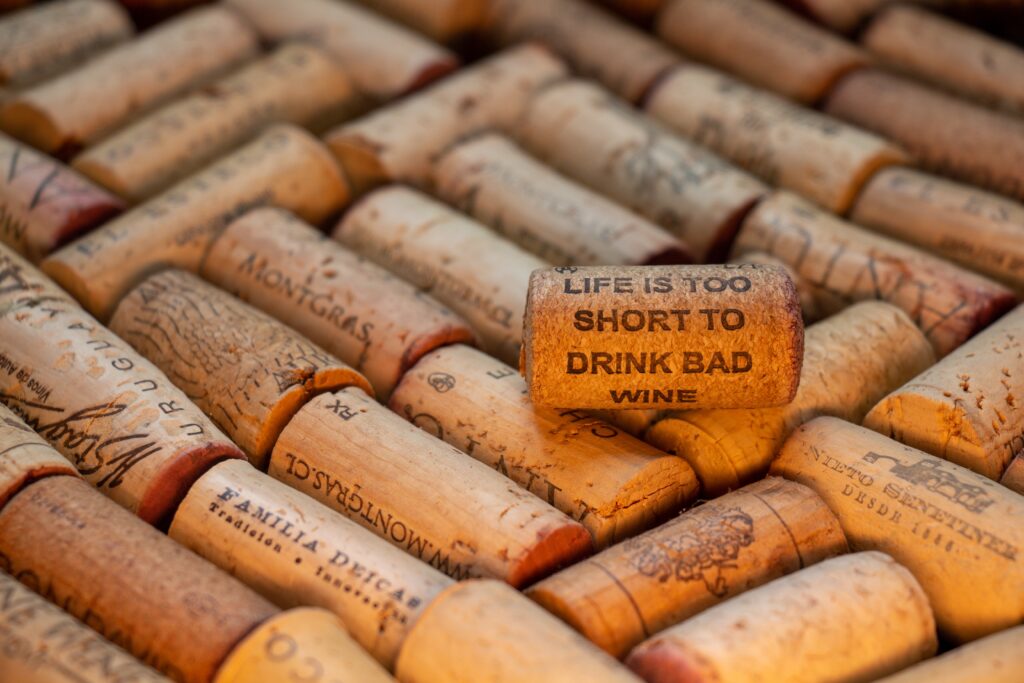
The answer is – no! While it is true that very cheap wines are often not very good, the idea that a higher price automatically equals better taste is not always accurate.
While it may be true that cheap wine often lacks quality, it is a myth perpetuated by elitists that great wine can only be obtained at a high cost.
For example, expensive Bordeaux and aged Burgundies, Napas Cabernets, or Supertuscans, which can be incredibly pricey, often get the most attention. This belief suggests that great wines require a lot of money.
While some expensive wines undeniably offer extraordinary experiences, equally remarkable options are available at more modest price points.
The wine world is full of myths and misconceptions, but we are here to tell you that you can indeed find fantastic and fascinating wine at a reasonable price and there are plenty of budget-friendly bottles out there that are worth trying.
The psychology behind expensive wines
Psychology plays a pivotal role in our perception of expensive wines. A study published in the Journal of Wine Economics tackled this very question.
The researchers conducted blind taste tests and found that participants were unable to consistently distinguish between expensive and inexpensive wines.
Studies have shown that people tend to rate wines more favorably when they believe they are expensive, even if the wines are identical to their cheaper counterparts.
This suggests that the perception of quality might be influenced more by the price on the label (or the label and the brand itself!) than the actual taste.
Ever heard of the placebo effect? Well, it applies to wine too! According to research from the California Institute of Technology, our brains can influence our taste perceptions based on what we believe about a wine.
If you think you’re sipping on a pricy, top-shelf Bordeaux, your brain might trick you into tasting more complex flavors, even if you’re sipping a budget-friendly alternative.
Quality doesn’t always break the bank
Some of the most renowned wine experts have conducted experiments challenging the notion that pricey equals quality. And take the Judgment of Paris in 1976, for instance.
Wine experts blind-tasted Californian wines against their prestigious French counterparts. Shockingly, Californian wines not only held their own but were often preferred, despite being significantly cheaper.
Blind tastings, where wines are sampled without knowledge of their origin or price, often yield surprising results.
Experts and novices alike may struggle to distinguish between expensive and budget-friendly wines, challenging the assumption that a higher price equates to a discernible difference in taste. These revelations invite us to question the authenticity of our perceptions.
What you’re really paying for
So, if it’s not just about taste, what are you paying for when you splurge on an expensive bottle?
Well, it’s a combination of factors. Rareness, reputation, brand, production methods and winemaking process, packaging, distribution, marketing, taxes, and regulation all play a part.
For example, a limited-edition wine produced in small quantities by a top-quality winery or renowned winemaker might carry a hefty price tag due to its scarcity, brand, reputation etc.
In short, here are some of the main costs:
- Grapes: The foundation of any great wine lies in the quality of grapes used. Vineyard costs, including land, labor, and maintenance, contribute significantly to the overall expense.
- Winemaking process: Winemaking is an art, and skilled winemakers are in high demand. The cost includes fermentation, aging, bottling, and packaging.
- Regulations and taxes: Wine production is subject to numerous regulations and taxes. There are excise duties, sales taxes, and import/export tariffs, all of which vary by country and region.
- Packaging – Bottles, Corks, and Labels: The choice of bottle, closure (cork, screw cap), and labeling materials affects the cost. High-quality bottles and custom-designed labels add to the overall expense.
- Distribution and marketing: Distributing wine involves transportation, marketing, and sometimes commissions for distributors and retailers. Marketing expenses, including advertising and promotions, also play a role.
- Aging: Some wines, especially high-quality ones, are aged for several years. During this period, the winery has to store the wine in suitable conditions, which incurs costs related to storage space, insurance, and opportunity costs of tying up capital.
Finding your perfect bottle
Does this mean you should never indulge in a pricier wine? Not at all! Everyone’s palate is different, and sometimes, a higher-priced bottle might align perfectly with your taste preferences. Exploring and finding what suits your taste buds and budget is essential.
In conclusion, while the price of a bottle can indicate certain qualities, it doesn’t always guarantee a better-tasting experience. The world of wine is incredibly diverse, offering a vast array of options at various price points.
So, next time you’re shopping for wine, consider experimenting with different price ranges.
Who knows, your new favorite might be an affordable gem!
Best value Croatian wines
Many wine enthusiasts are always on the lookout for hidden gems when it comes to finding the best-value wines. And one of the best options for this pursuit is Croatian wines.
This Old World wine country produces top-quality wines from indigenous grape varieties, with many award-winning wineries and great-value regions.
How to find the best-value Croatian wines?
First things first, let’s get acquainted with Croatia’s diverse wine regions. From the continental vineyards of Slavonia and Croatian Uplands to the coastal splendors of Istria and Dalmatia, each region produces unique grape varieties and winemaking traditions.
- Get to know the grape varieties
Croatia proudly produces a variety of indigenous grape varieties (around 130!), each with its distinctive flavors and characteristics. Some of the most famed and awarded ones are Plavac Mali, Malvasia Istriana, Graševina and Teran.
- Explore local wineries
To truly understand Croatian wines, you must venture into local wineries. These family-owned estates often produce limited batches of high-quality wines, rich in both flavor and tradition.
- Consider established wine producers
Apart from producing award-winning wines for years, these passionate winemakers often experiment with innovative techniques and grape blends, creating exciting and affordable wines. Stay tuned to local wine events and festivals to discover these established wine stars.
- Read reviews and seek recommendations
In the digital age, reviews and recommendations are your best friends. Explore wine enthusiast websites, social media platforms, and wine forums to find out what fellow enthusiasts are raving about. Experts’ opinions can guide you towards exceptional wines that offer great value for money.
- Visit wine festivals and tastings
Wine festivals and tastings are excellent opportunities to sample a wide array of Croatian wines in one place. These events often feature both established and lesser-known wineries, allowing you to compare and contrast different styles and flavors. Plus, winemakers and experts are usually on hand to share their insights, making your wine-tasting experience even more enriching.
Where is the best value wine in Croatia?
Among the various options available, the Graševina grape stands out as a particularly noteworthy choice for those seeking exceptional value, character, and flavor in their wine.
And the best Graševina wines (as well as most of the value-for-money wines) regularly come from the Slavonia and the Danube wine region.
Enosophia: A champion in the best value-for-money category
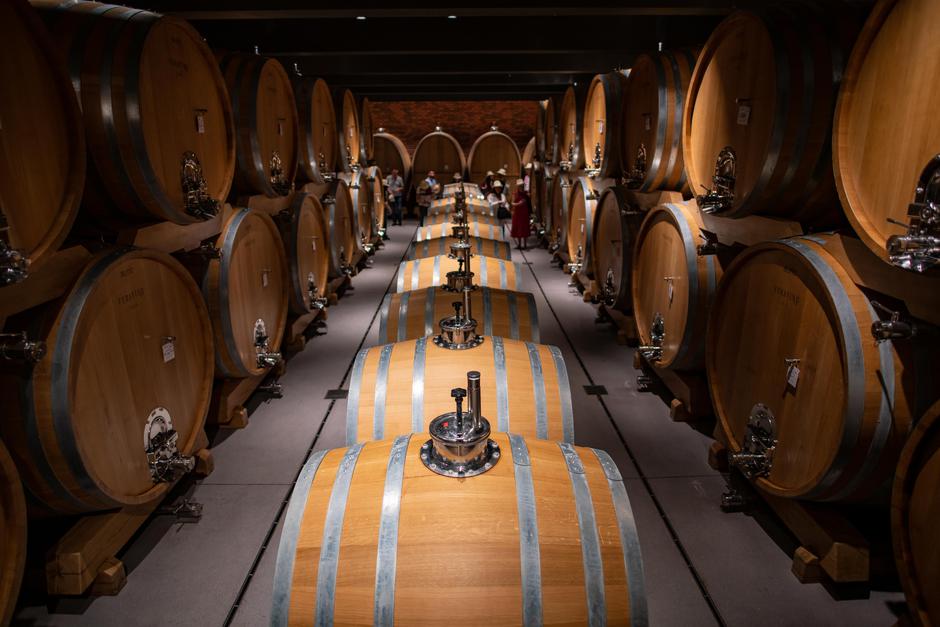
Enosophia Winery is a standout among the many wineries in Croatia, creating some of the best value wines that keep winning awards and hearts of experts and wine enthusiasts alike.
The winery cultivates grapevines across 156 hectares, spanning eight locations, including a newly acquired 63 hectares. Unlike other Slavonian wineries, their vineyards have an equal representation of red and white grape varieties, predominantly Blaufränkisch (Frankovka) and Graševina.
Here are the reasons why their wines have emerged as true champions in the best-value wines category:
- Exceptional quality: Enosophia Winery wines consistently receive praise for their exceptional quality, showcasing the potential of Croatian winemaking, especially that of the Slavonia and the Danube wine region. The wines reflect the unique characteristics of the local terroir, providing a genuine taste of the Feričanci wine-growing subregion.
- Affordability: Despite their outstanding quality, Enosophia wines remain remarkably affordable. Enosophia’s commitment to offering value for money makes these wines accessible to a wide audience, allowing more people to experience the excellence of Croatian winemaking.
- Recognition and awards: Enosophia wines have garnered numerous awards and accolades on both national and international wine evaluations. These honors not only highlight the quality of the wines but also reinforce their status as some of the best-value wines in Croatia.
- Versatility: Enosophia wines are incredibly versatile, pairing well with a variety of cuisines. Whether enjoyed on their own or paired with local delicacies, these wines enhance the dining experience, making them a favorite choice among wine enthusiasts.
Enosophia Nice To See You: Best value Croatian sparkling wine
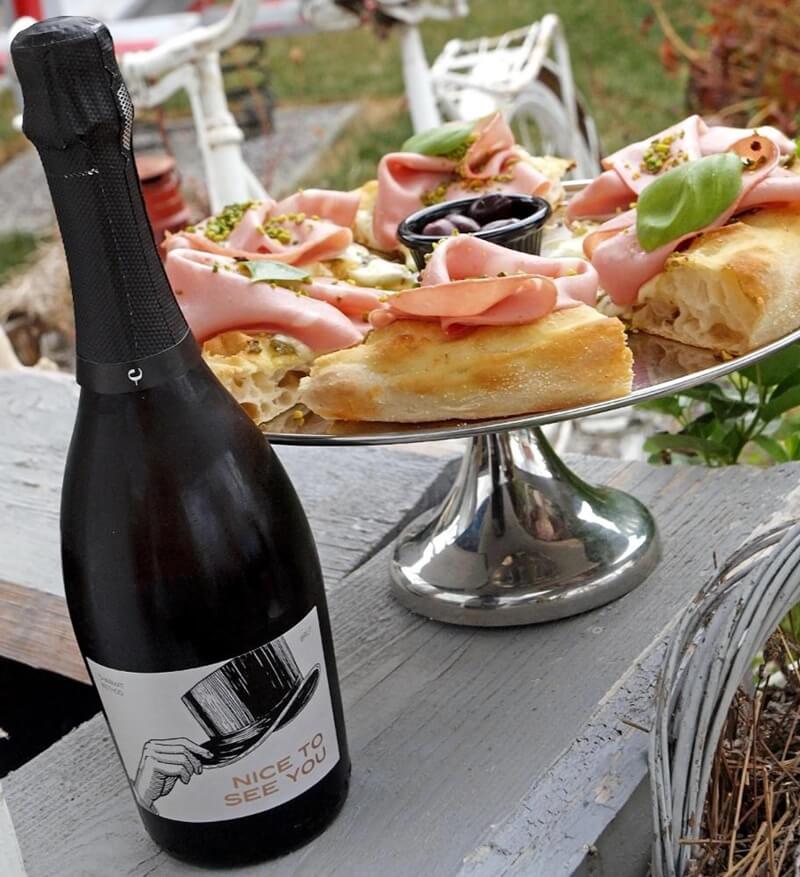
Enosophia is the pioneering winery in Croatia, introducing autoclave tanks to the country’s winemaking scene.
In Croatia, three distinct styles of Charmat method sparkling wine have emerged, each produced by Enosophia.
One such creation is a budget-friendly sparkling wine named Nice To See You, a blend of Chardonnay and Pinot Noir.
All the grapes for these sparkling wines are handpicked, followed by primary fermentation for 12 hours at 16°C or 60.8°F. The wines are then stored in autoclave stainless steel tanks, where secondary fermentation occurs using the Charmat method.
The wine is then kept with fine yeast sediment for three months, followed by repeated yeast inoculation in autoclave tanks, with fermentation lasting 14 days. Subsequently, there is a 5-month autolysis of yeast, filtration, and preparation for bottling.
The result is a delicate and discreet fresh aroma with subtle fruity notes, highlighted by distinct sour cherry tones and a hint of yeastiness.
Enosophia Trs No. 5: Best value Croatian white wine
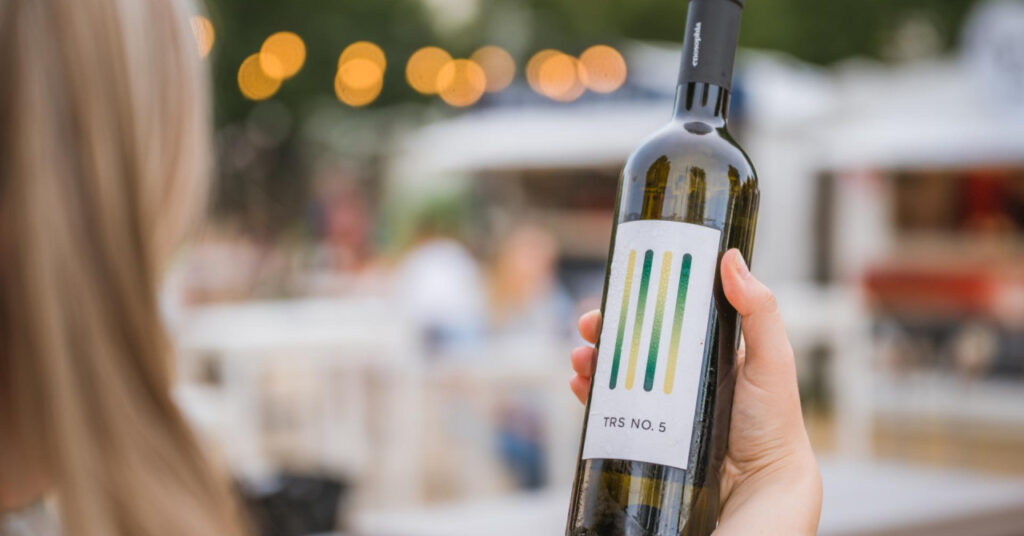
An excellent example of the best-value white wine is Enosophia Trs No. 5 – the label’s name derives from the fact that every fifth vine in Croatian vineyards belongs to this variety.
Graševina grapes are harvested when fully ripe. The must is then left to settle and undergoes temperature-controlled fermentation at 16°C or 60.8°F. After malolactic fermentation, the wine ages for 4 months with frequent stirring on fine yeast.
By fermenting on fine yeast, Trs No. 5 is a refreshing, balanced and elegant wine that is also juicy and vibrant. This wine showcases the typical Graševina flavor profile with notes of apples and citrus, along with floral and nutty undertones.
A fun fact is that Enosophia made its public debut with Croatia’s first interactive wine labels, featuring Graševina Trs No. 5 and Rosé Matarouge. These labels incorporate augmented reality effects, offering consumers a multi-sensory experience.
Upon scanning the QR code on Trs No. 5, users can immerse themselves in music tailored specifically for that wine.
Scanning the Trs No. 5 label triggers a composition created exclusively for this wine, narrating the flavors of Graševina through a musical tale.
This Graševina No. 5 has gained international recognition, earning a bronze medal at this year’s Decanter World Wine Awards.
Matarouge: Best value Croatian rosé wine
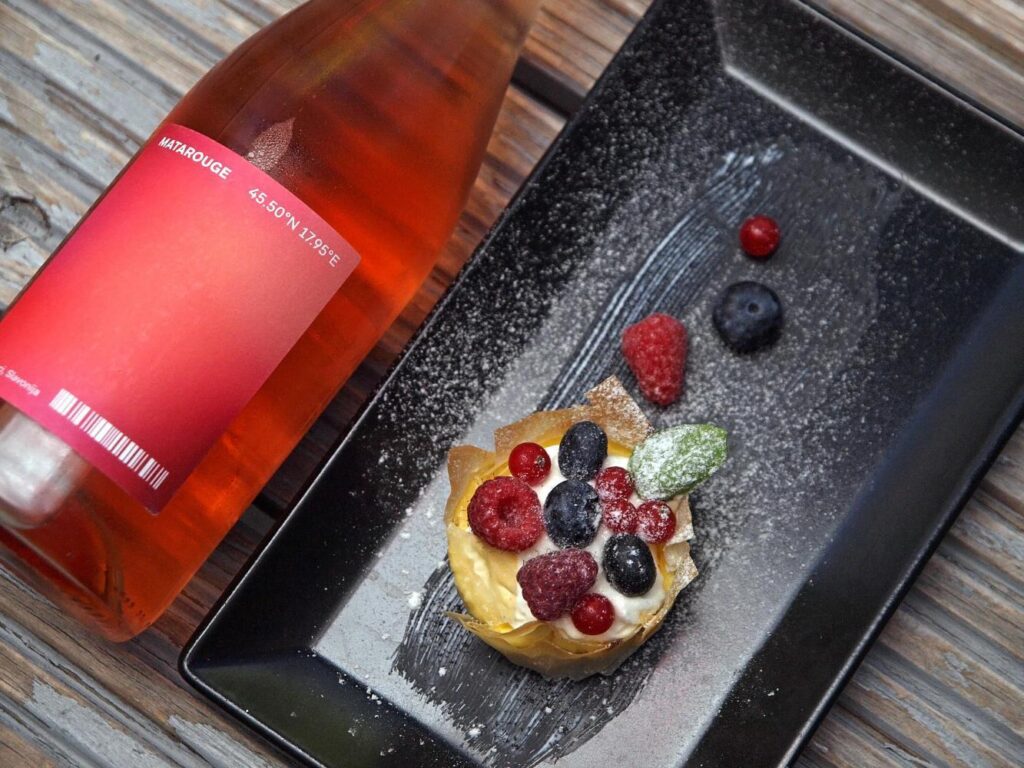
Enosophia’s Matarouge stands out as an exceptional value in the realm of Croatian rosé wines. Several factors contribute to its distinction, making it an excellent choice for wine enthusiasts seeking quality at an affordable price point.
First and foremost, Matarouge’s origin in the Mataruge location in Feričanci is noteworthy. The careful selection of Frankovka (Blaufränkisch) and Pinot Noir grapes from this region speaks to the winegrowers’ dedication to quality.
The choice of grape varieties itself is an indicator of the wine’s potential, as both Frankovka and Pinot Noir are renowned for their complexity and depth of flavor.
One of the standout features of Matarouge is its innovative use of technology, as evidenced by the QR code integration. This forward-thinking approach not only enhances the consumer experience but also demonstrates Enosophia’s commitment to transparency and education.
By providing a virtual journey through rosé wine regions worldwide and live streaming from Matarouge vineyard in Feričanci, Enosophia invites enthusiasts into the heart of winemaking, fostering a deeper connection.
The sensory profile of Matarouge further establishes its value. The wine opens with a clean and alluring aroma characterized by mild yet fruity notes. The prominent red fruit scent reminiscent of raspberries, coupled with a hint of herbal sage, creates an enticing bouquet.
On the taste, it has a dry, refreshing, soft, with a rounded flavor profile, complemented by buttery notes, adding complexity and depth.
The winemaking process includes a fast pressing method, sedimentation, and separate fermentation for 12 days at a controlled temperature of 16°C (60.8°F), showcasing the winemakers’ expertise.
Additionally, malolactic fermentation and aging on fine yeast sediment for three months with occasional stirring contribute to the wine’s smooth texture and well-integrated flavors.
Enosophia Rubi Fusion: Best value Croatian red wine

Rubi Fusion is another great value wine from Enosophia, a blend of the Frankovka (Blaufränkisch) 25%, Cabernet Sauvignon 25% and Merlot 50% varietals.
After the primary processing, maceration and fermentation were conducted separately for each variety over a period of 12 days.
During this time, malolactic fermentation also took place. Following the fermentations, the wine was transferred to large Slavonian oak barrels (1000 and 3000 liters) for aging, where it matured for 10 months.
This full-bodied fruity blend with a seductive taste is infused with sweet spices, vanilla, and a smoky flavor, a nice influence of wood aging.
It perfectly accompanies your search for best-value red wines as well as meat specialties made of game, lamb, and beef, and more spicy traditional Slavonian cuisine. 🙂
Conclusion
In conclusion, best-value wines are a testament to the craftsmanship and passion of winemakers across the globe. The quest for the best value wines is an enriching journey that combines knowledge, exploration, and appreciation for the art of winemaking.
Whether you’re savoring a glass of Enosophia sparkling or red wine or exploring the wonders of other great Croatian value wines, these wines prove that exceptional quality can be accessible to all.
The true essence of a great wine is in the delightful experience it offers, not its price tag, making each sip a moment to cherish.



















